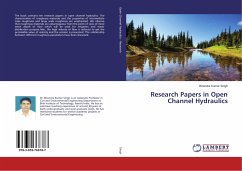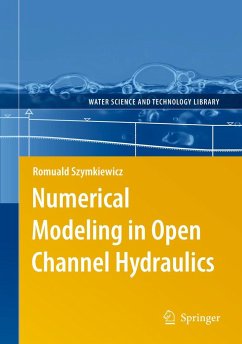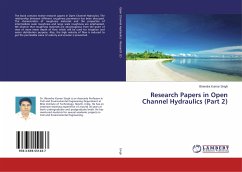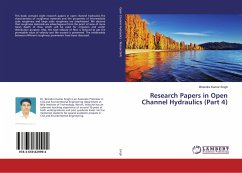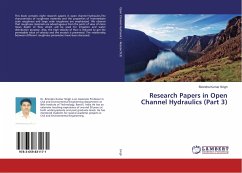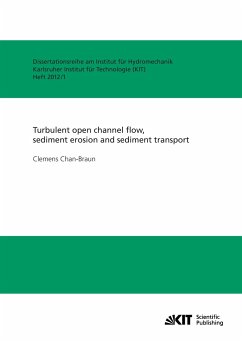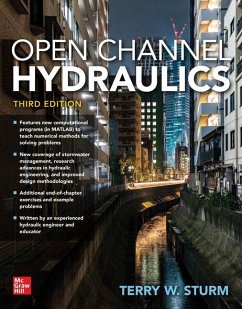
Numerical Simulation of Water Flow In Open Channel
Versandkostenfrei!
Versandfertig in 6-10 Tagen
43,99 €
inkl. MwSt.

PAYBACK Punkte
22 °P sammeln!
The presence of disturbances such as bends, contraction, expansion, junction, bridge piers in a drainage system is very common. These hydraulic structures often cause the channel flow to choke and form standing waves. The challenges for this numerical model lie in representing supercritical transition and capturing shocks. The model testing demonstrates the ability of this numerical model to reproduce the speed and height of flow with the presence of hydraulic structure under different flow conditions. The numerical model results are compared quantitatively with experimental results that condu...
The presence of disturbances such as bends, contraction, expansion, junction, bridge piers in a drainage system is very common. These hydraulic structures often cause the channel flow to choke and form standing waves. The challenges for this numerical model lie in representing supercritical transition and capturing shocks. The model testing demonstrates the ability of this numerical model to reproduce the speed and height of flow with the presence of hydraulic structure under different flow conditions. The numerical model results are compared quantitatively with experimental results that conducted in UTM laboratory, published numerical simulation and analytical solution. The results demonstrate that the numerical model provides an alternative tool in validating theoretical finding and evaluating flow performance. The present model is not suitable for any surface flow that has steep gradients and this study is limited to rectangular channel only.



